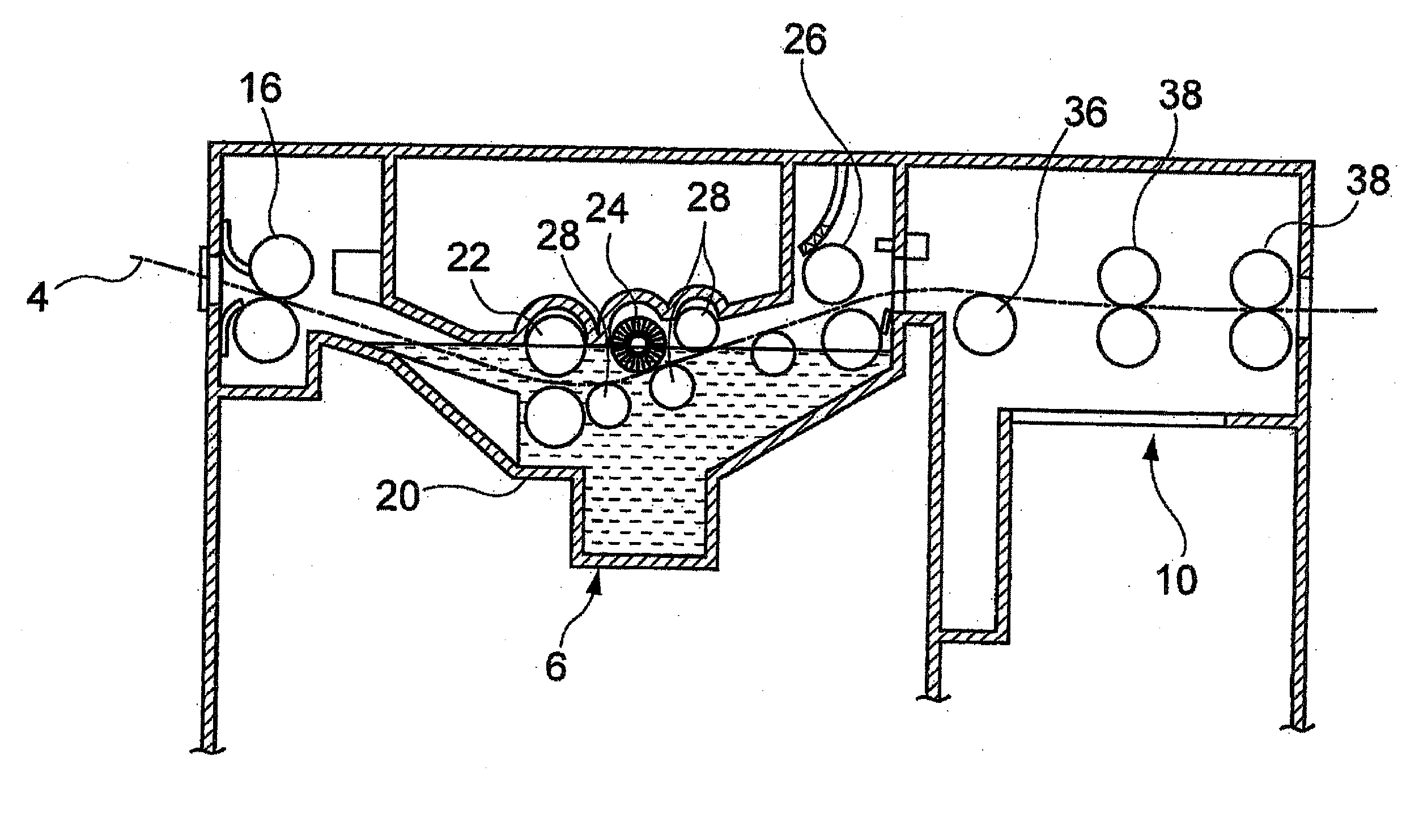Method of preparing lithographic printing plate
a lithographic printing and printing plate technology, applied in the field of preparing lithographic printing plates, can solve the problems of small amount of waste, large space required by automatic developing machines per se, environmental problems, etc., and achieve the effects of small occurrence of development scum, good developing property, and excellent processing property
- Summary
- Abstract
- Description
- Claims
- Application Information
AI Technical Summary
Benefits of technology
Problems solved by technology
Method used
Image
Examples
examples
[0429]The present invention will be described in more detail with reference to the following examples, but the invention should not be construed as being limited thereto.
example 36
[0460]In the violet semiconductor laser plate setter Vx9600 wherein the InGaN semiconductor laser (emission: 405 nm±10 nm / output: 30 mW) had been replaced with a semiconductor laser having output of 100 mW, the lithographic printing plate precursor of Example 1 was subjected to image exposure in a plate surface exposure amount of 0.25 mJ / cm2. The exposed lithographic printing plate precursor was without performing the pre-heating, subjected to the development processing in the automatic development processor having a structure shown in FIG. 1 using Developer 1. Except as described above, the developing property, printing image-forming property, processing property and printing durability were evaluated in the same manner as in Example 1 and the good evaluation results same as in Example 1 were obtained.
example 37
[0461]The lithographic printing plate precursor of Example 1 was subjected to image exposure in the same manner as in Example 1 and within 30 seconds subjected to the development processing using an automatic development processor (LP1250PLX, produced by Fuji Film Co., Ltd.) having the construction shown in FIG. 2. The automatic development processor was composed of a pre-heating unit, a pre-water washing unit, a developing unit, a water washing unit and a finishing unit in this order. The heating condition in the pre-heating unit was at 100° C. for 10 seconds. To the developing bath, Developer 1 was supplied. To the pre-water washing unit, water washing unit and finishing unit was not supplied any liquid and only their transporting functions were used. Except the development processing described above, the developing property, printing image-forming property, processing property and printing durability were evaluated in the same manner as in Example 1 and the good evaluation result...
PUM
| Property | Measurement | Unit |
|---|---|---|
| emission wavelength | aaaaa | aaaaa |
| pH | aaaaa | aaaaa |
| pH | aaaaa | aaaaa |
Abstract
Description
Claims
Application Information
 Login to View More
Login to View More - R&D
- Intellectual Property
- Life Sciences
- Materials
- Tech Scout
- Unparalleled Data Quality
- Higher Quality Content
- 60% Fewer Hallucinations
Browse by: Latest US Patents, China's latest patents, Technical Efficacy Thesaurus, Application Domain, Technology Topic, Popular Technical Reports.
© 2025 PatSnap. All rights reserved.Legal|Privacy policy|Modern Slavery Act Transparency Statement|Sitemap|About US| Contact US: help@patsnap.com



